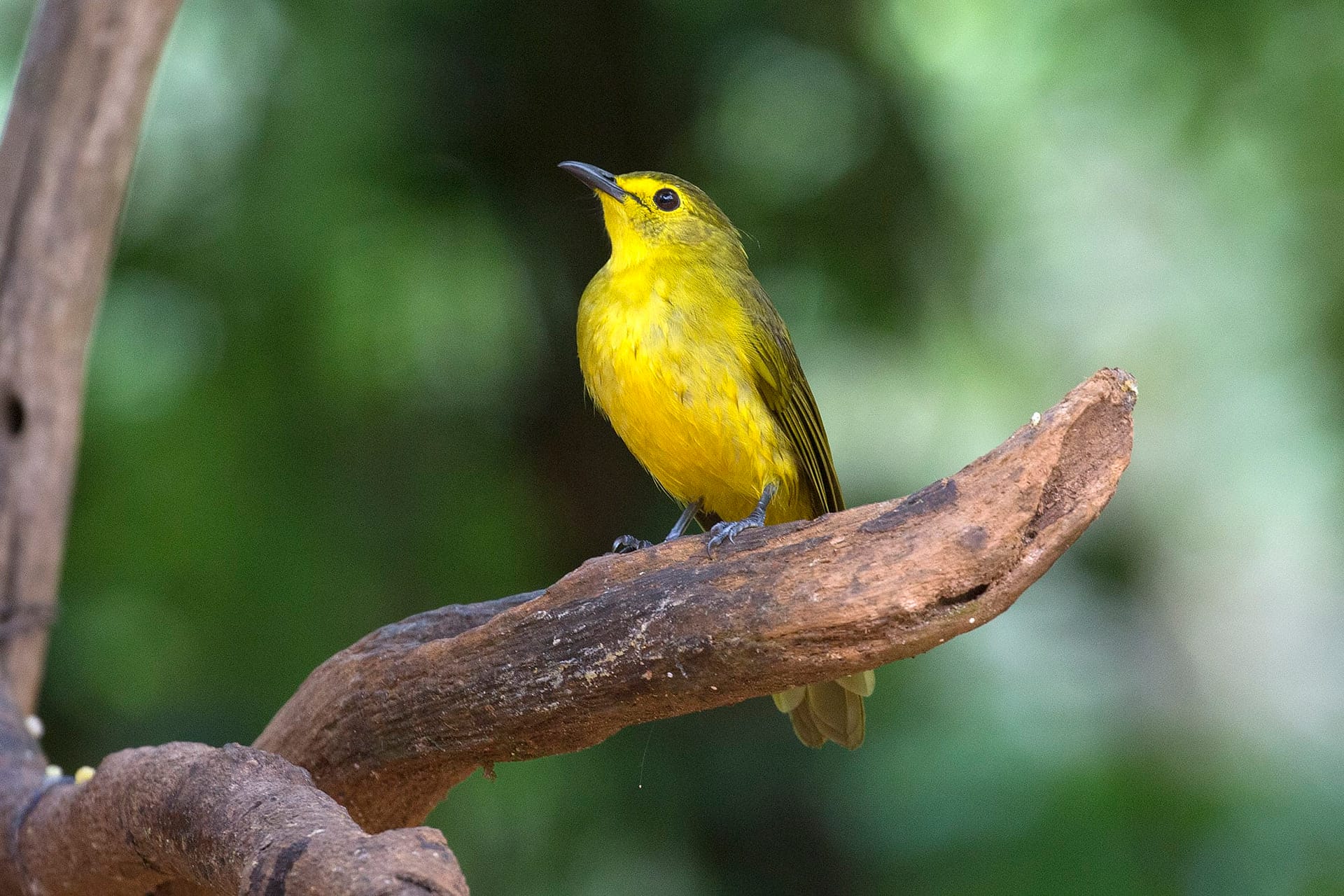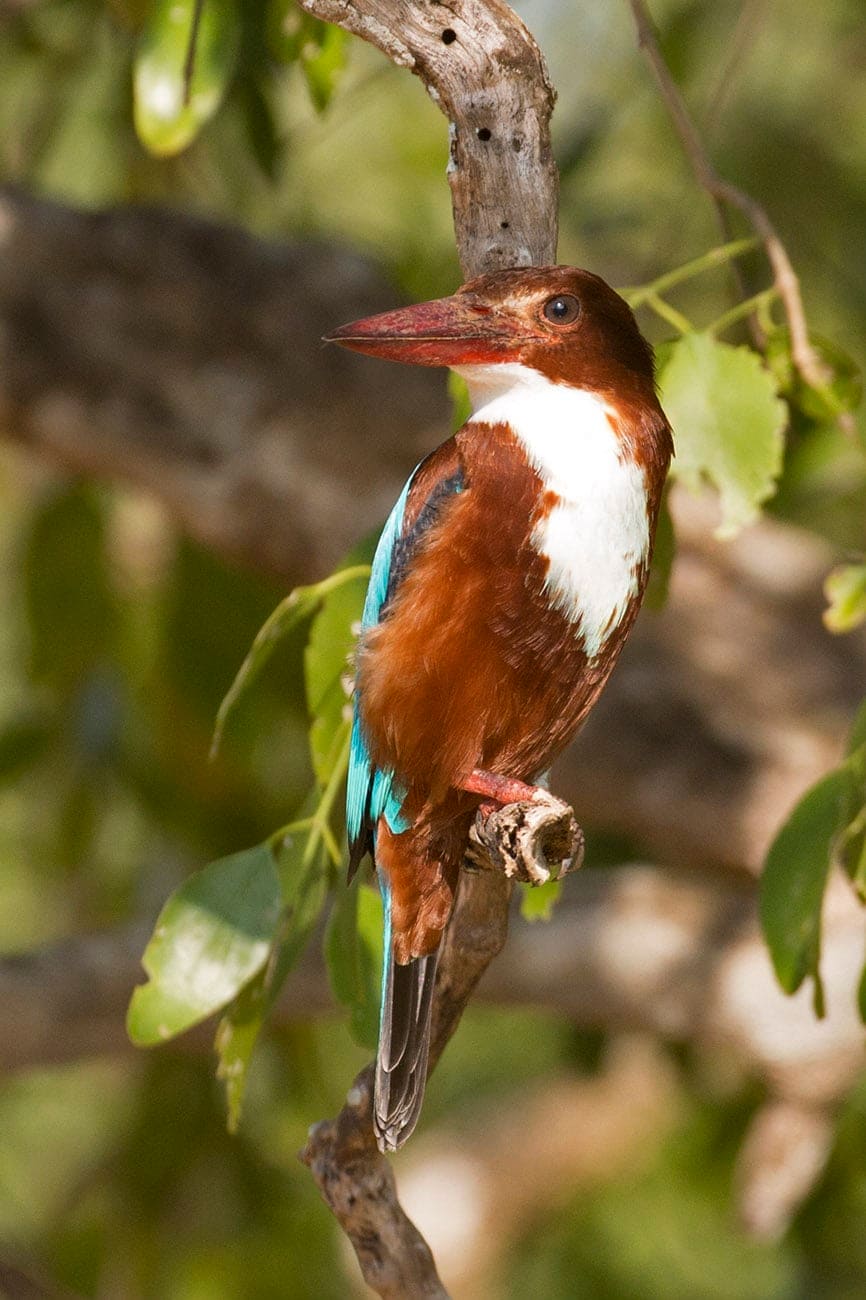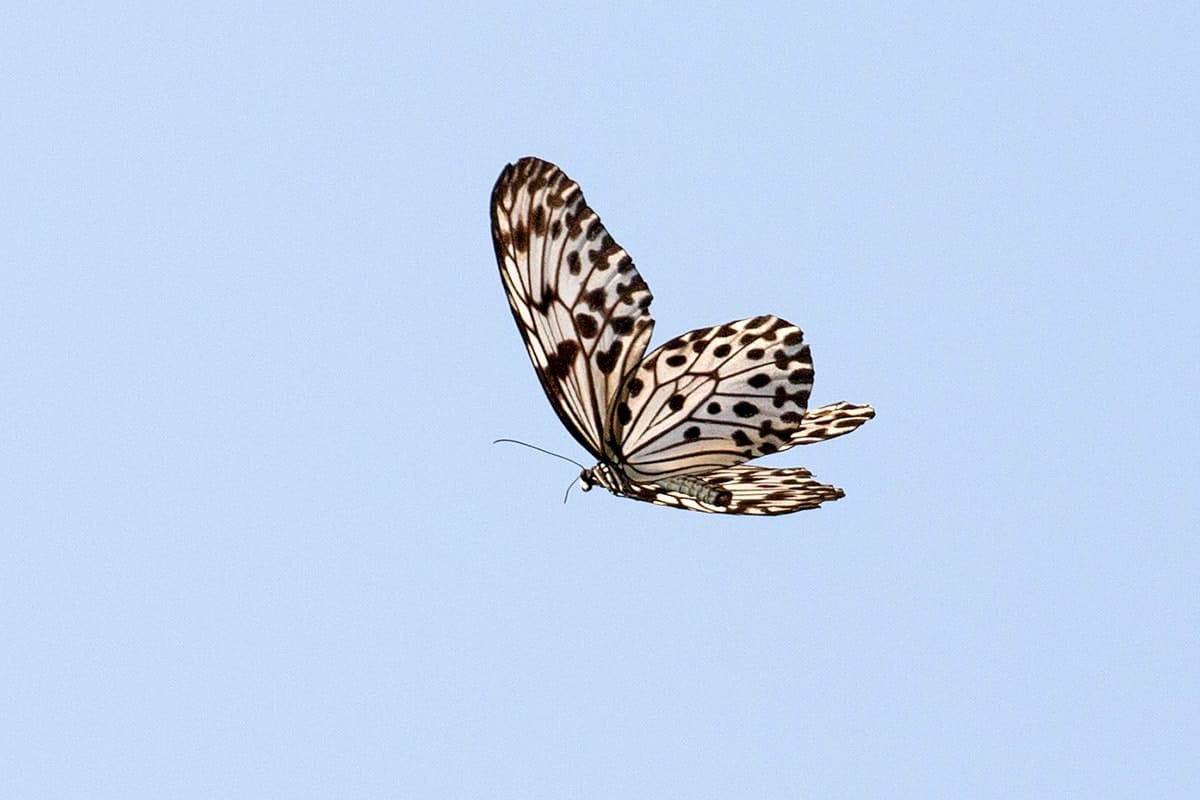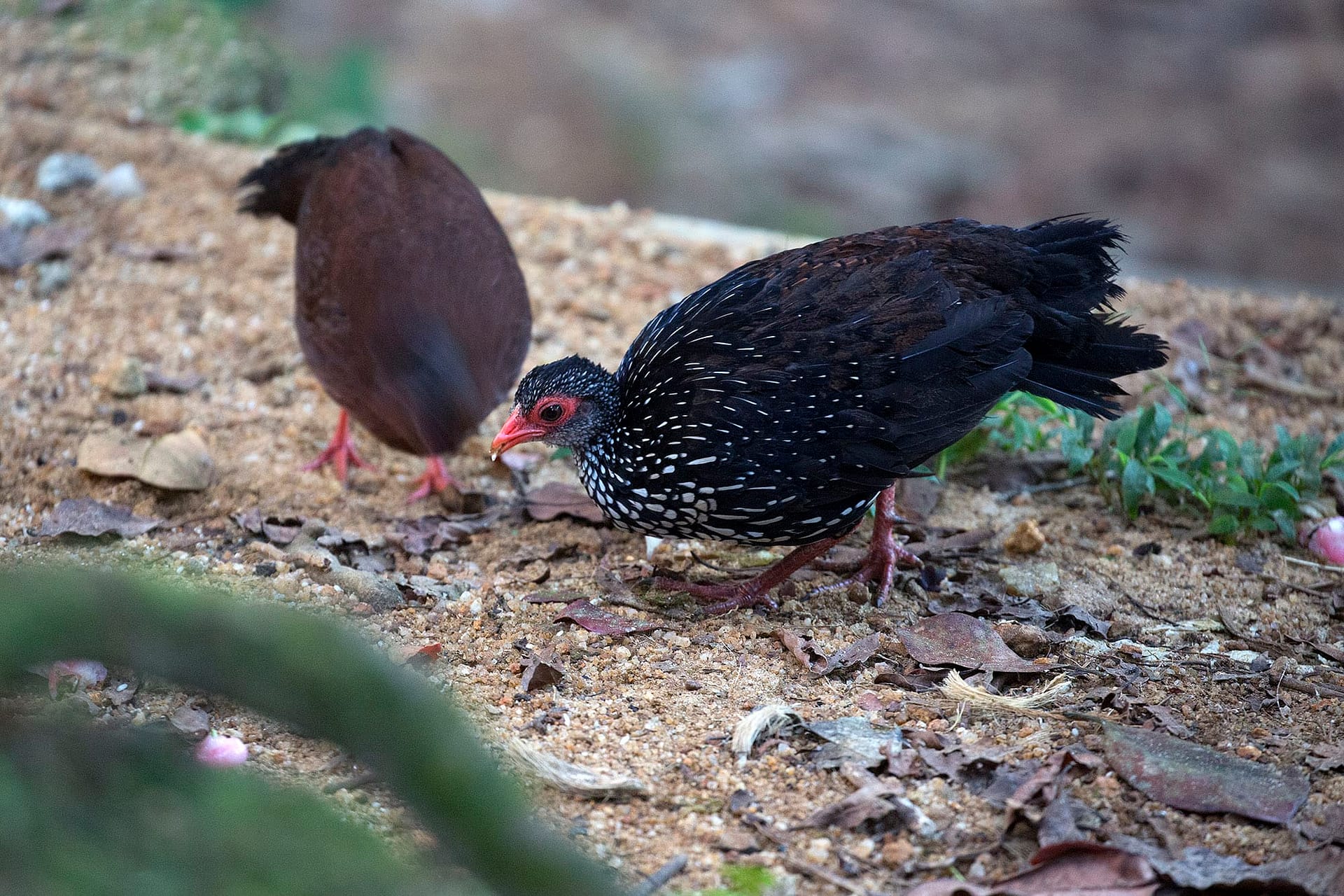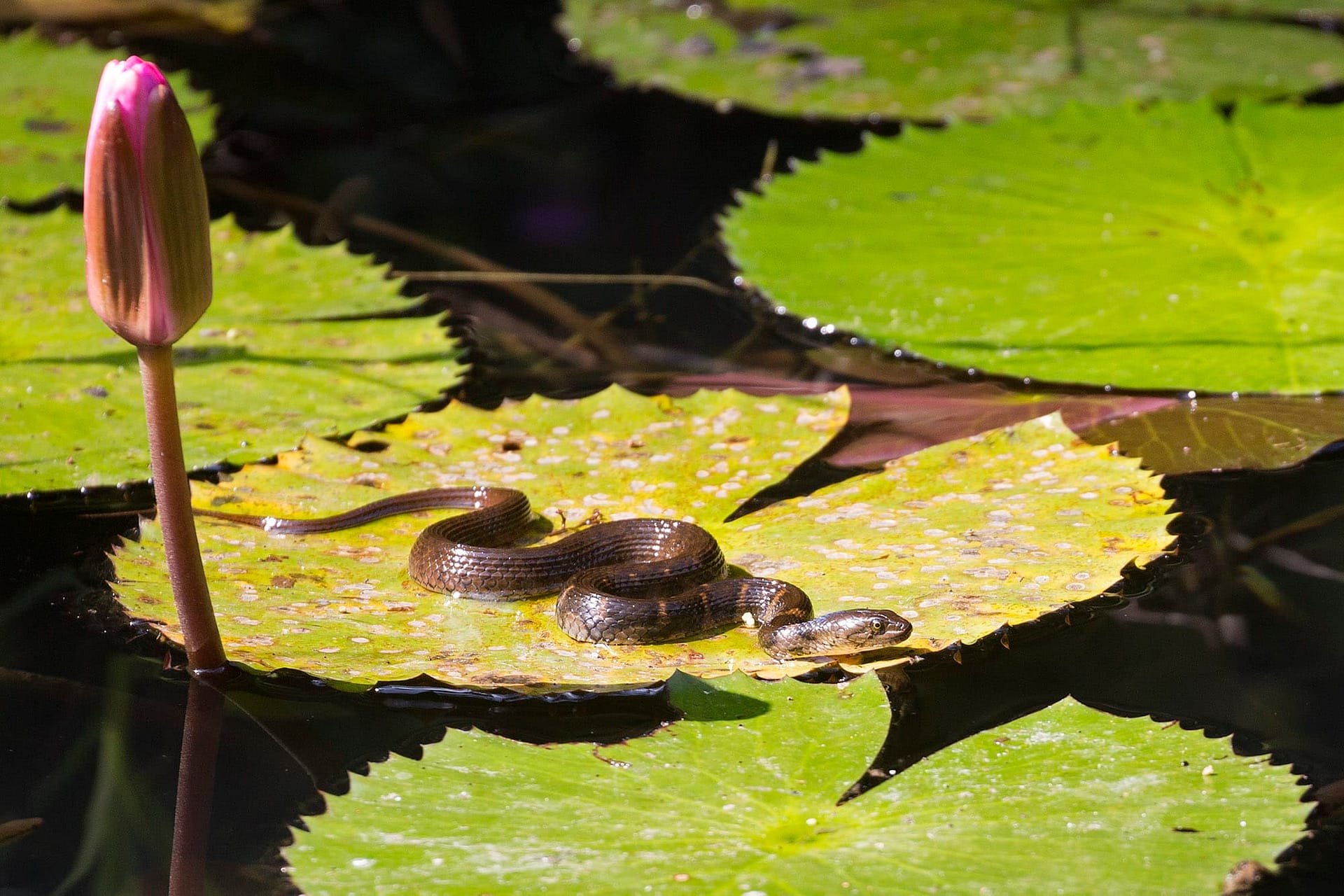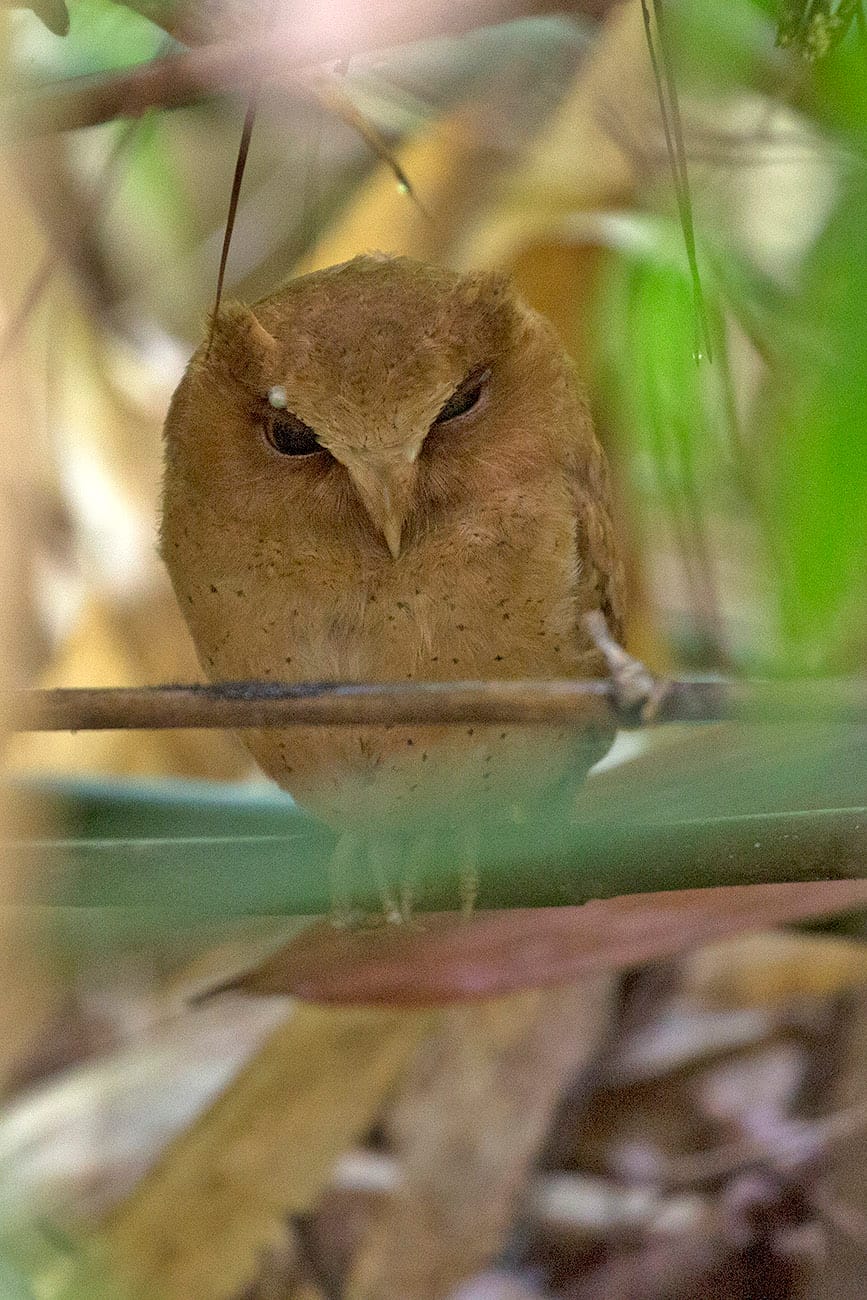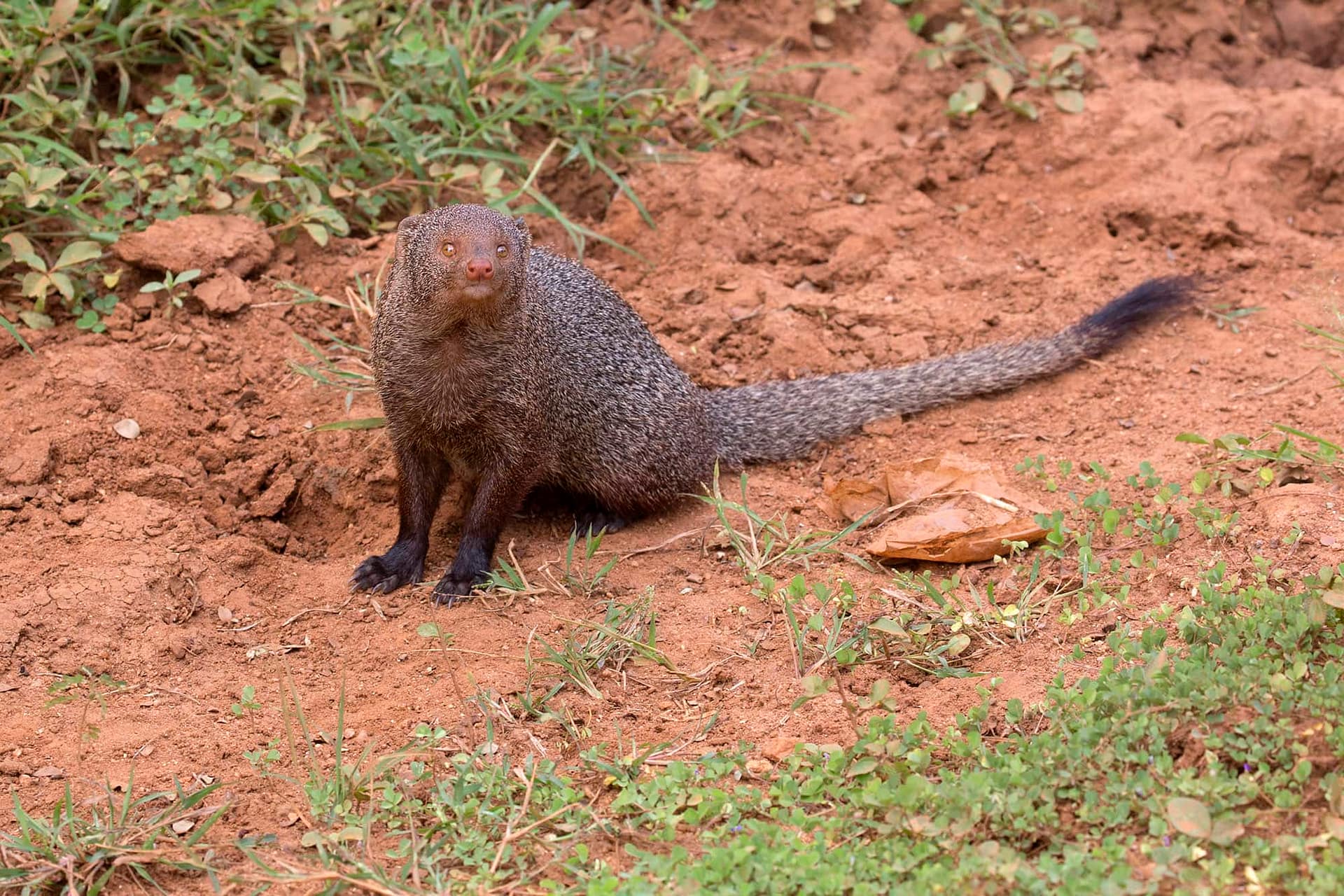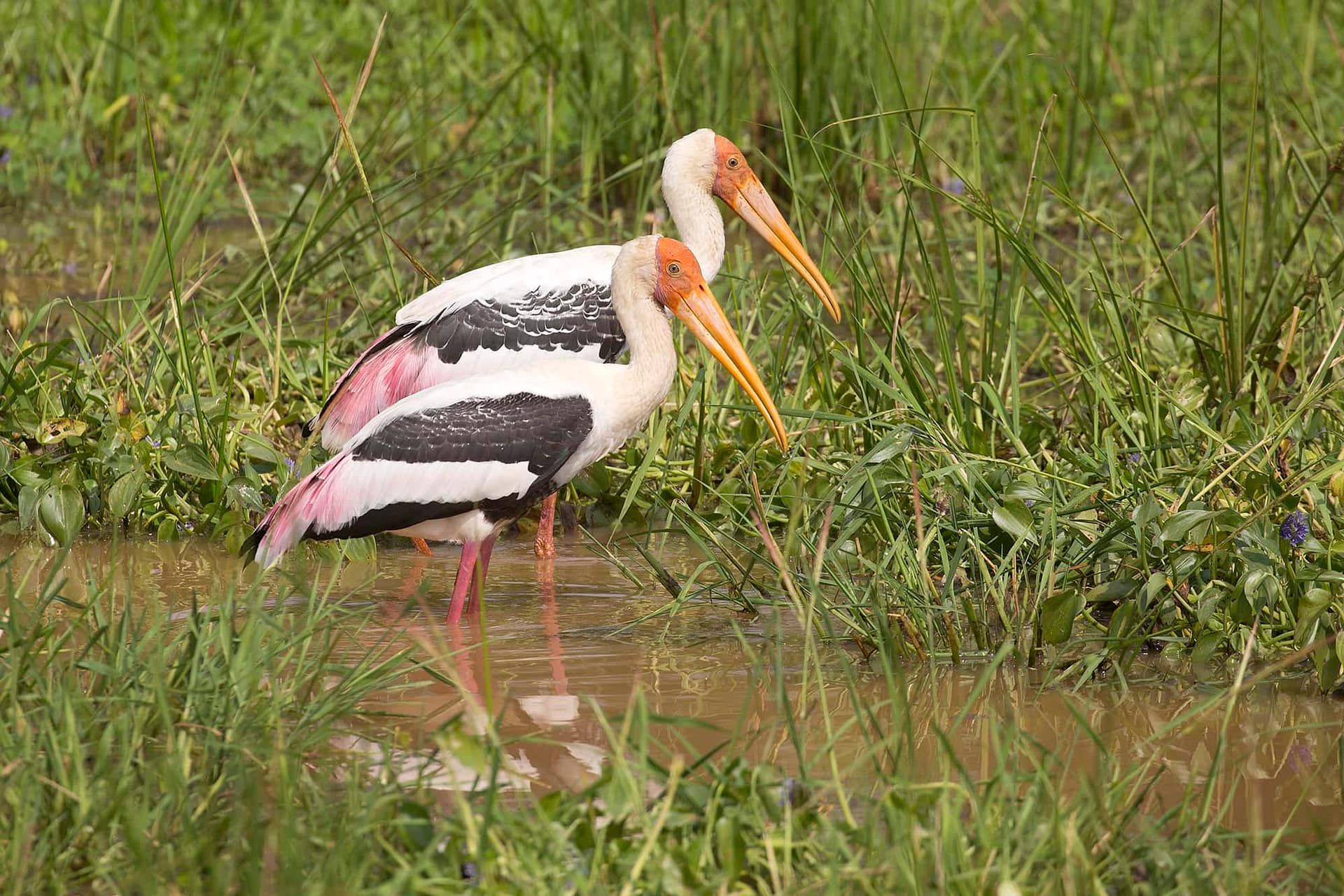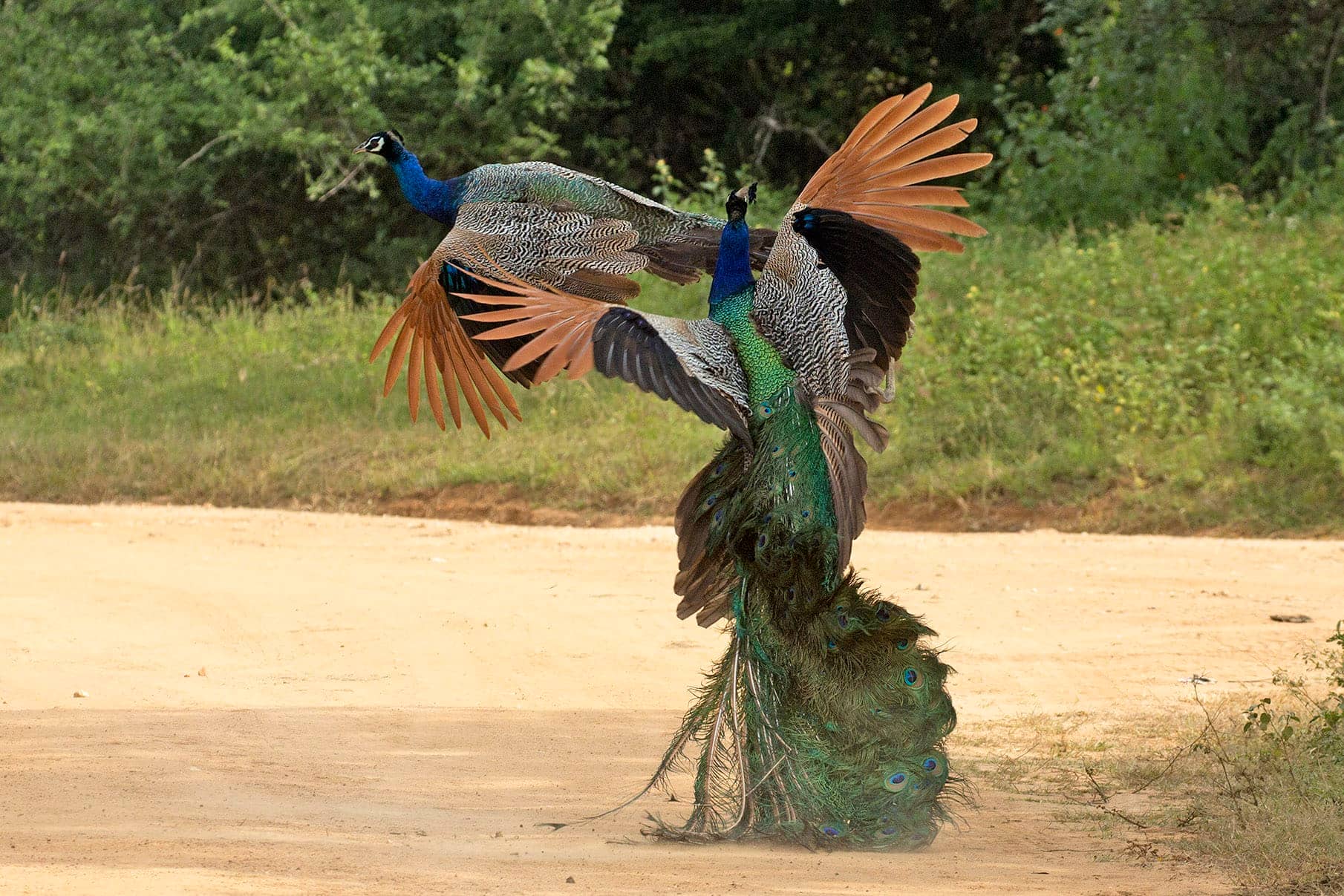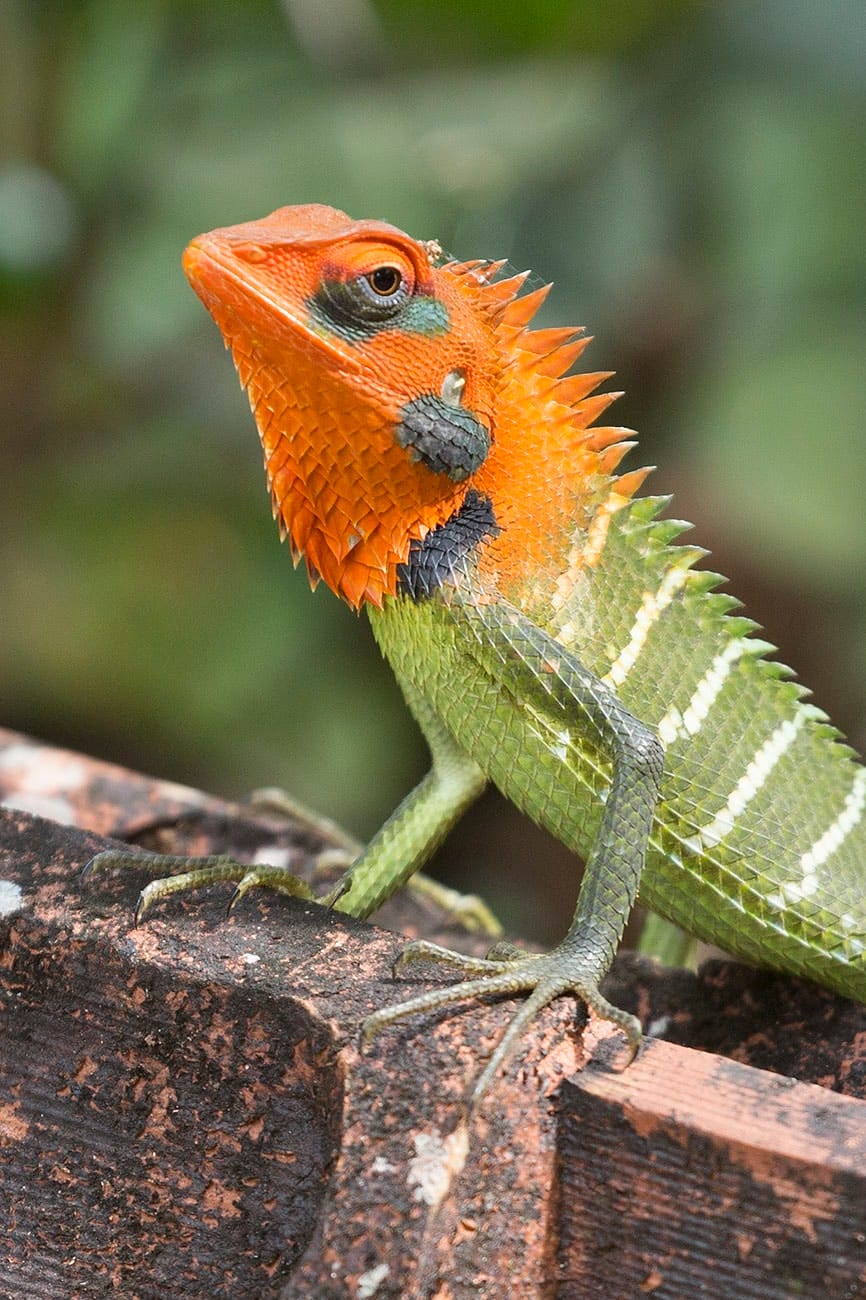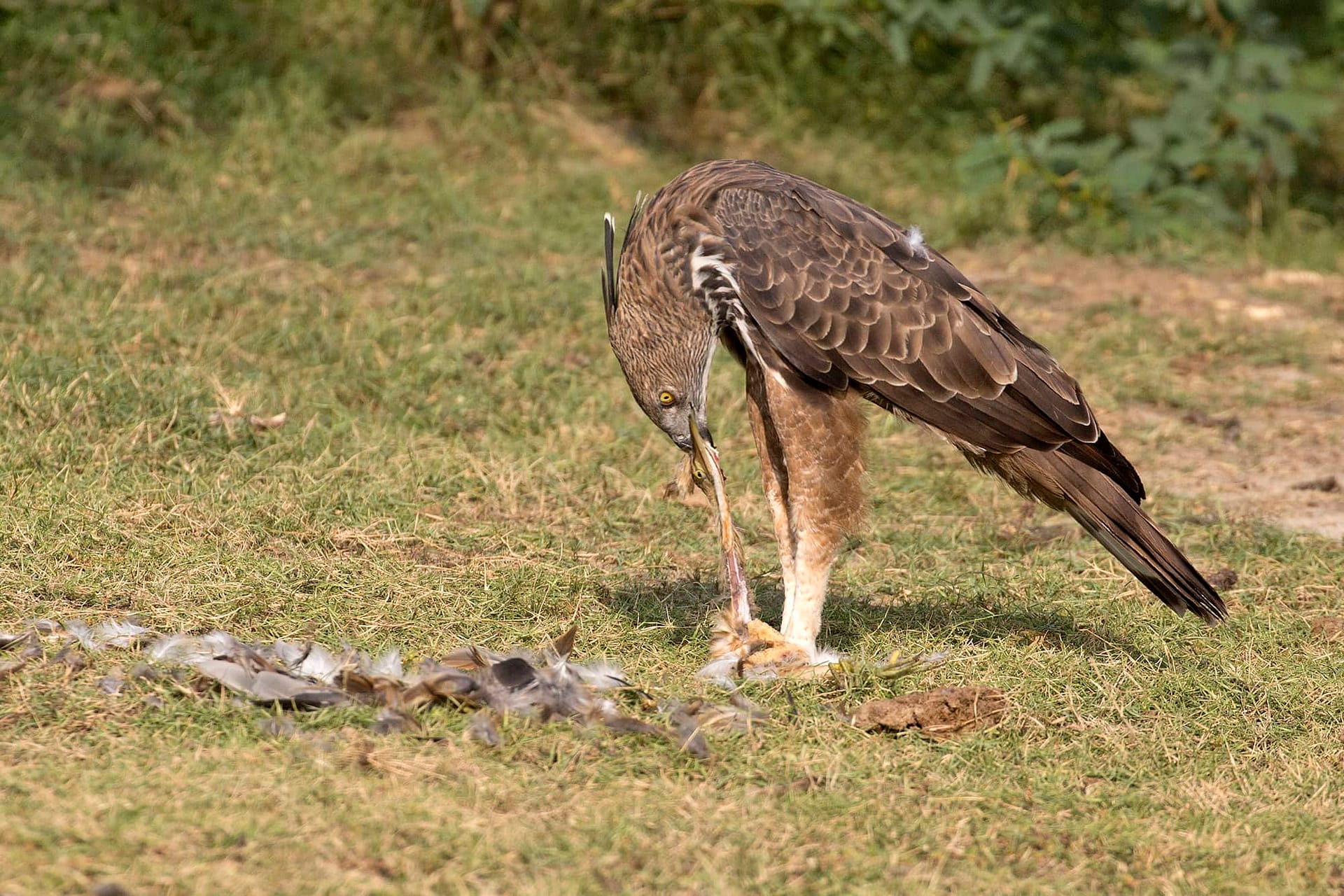TRIP REPORT: SRI LANKA – 2018 January – Wildlife Safari

TOUR FOCUS
TRIP LEADERS
PRIVATE TOUR OPTION
This tour is available as a private trip for any size group. The tour cost will vary with the number of people and any custom requests.
TESTIMONIALS
Trip report by Debbie Beer
Day 1 / Jan 7 – Arrival Negombo
We spent most of the day flying from Philadelphia to Colombo, connecting in Doha, Qatar. After nearly 24 hours in transit, we were happy to arrive in Colombo and meet Rajiv, tour organizer, at the airport. Waiting for our van, we were entertained by hundreds of House Crows flying noisily to their evening roost near the airport. We transferred to the Beacon Beach Hotel in Negombo, in time for a relaxing dinner along the edge of the beach. Ocean waves lulled us to restful sleep.
Day 2 / Jan 8 – Negombo to Sinharaja
House Crows were the first birds to greet us before daybreak; from our balcony overlooking the ocean, we watched hundreds of them streaming out of palm trees. We dressed and took a sunrise stroll along the beach. Fishermen prepared their gear and pushed sturdy wooden dohw boats into the surf. Dogs trotted the shoreline, looking for handouts, occasionally digging into the sand for crabs. As the sky lightened, the number of Whiskered Terns increased, quartering along the shoreline and farther out with the boats. We picked out a couple of Gull-billed Terns. Little and Indian Cormorants flew by, once side-by-side, for comparison views of their notable size difference. Flocks of Cattle Egrets flew over the city, and several settled in beachside vegetation, with a couple of Little Egrets mixed in. Barn Swallows hawked insects over the beach and waves.
After a lovely breakfast overlooking the sea from the top floor of the hotel, we checked-out and awaited our guide in the lobby. The screech of Rose-ringed Parakeets caught our attention, and we watched them inspect holes in a palm tree across the street. Blue-tailed Bee-eaters landed on the wires, and Common Mynas called from nearby perches.
With Koush as our guide, and Sampath at the wheel, we embarked on the journey to Sinharaja Forest Reserve. The long drive was broken up by multiple stops. Koush had a knack for pulling over to look at a soaring raptor, then finding many other birds too! At Katunayaka canal, near the back edge of Colombo airport, our first sighting of Brahminy Kite led us to a great assortment of wetland species, including: Yellow and Black Bittern, Indian Pond Heron, White-breasted Waterhen, Little Cormorant, Black-headed Ibis, and White-throated Kingfisher. An Asian Koel called, while a pair of Long-billed (Loten’s) Sunbirds flashed brilliant turquoise from atop a tree. Red-vented Bulbuls called loudly, noting the arrival of a young Shikra.
Colorful odes flitted near the path, pausing long enough for photos: Lime, Psyche, Crimson Rose, and Jezebel Butterflies, along with Pied Parasol and Green Skimmer dragonflies, and a Yellow Waxtail damselfly.
Down the road a ways, we enjoyed close looks of Greater (Southern) Coucal, Asian Openbill, Gray Heron, Great Egret and Red-wattled Lapwings in rice paddyfields. Adrian and Koush saw a Brown Mongoose zipping across the creek.
At a roadside stop for a Crescent Serpent-Eagle, numerous swallows swirled overhead, allowing good comparison of four (4) species: Indian Swiflet, Asian Palm Swift, Barn Swallow and the endemic Sri Lanka Swallow. Asian Emerald Dove flew across the road, flashing his namesake color, while a Brown Shrike and White-throated Kingfisher perched on adjacent posts in a field. A pair of Small Minivets showed handsomely in a tree, along with Pale-billed Flowerpecker. Butterflies flitted in the ditch next to our vehicle: Common Sailor, Lime, Mottled Emigrant, and Three-spot Grass Yellow. A pair of Yellow Featherleg damselflies were joined in mating.
By mid-afternoon we were climbing the edge of the southwestern hills, where rubber trees were numerous, and tea plantations were planted in neat terraces up and down valleys. At Weddagala Junction, an Oriental Honey-Buzzard circled in thermals. Getting out for the raptor, we were immediately captivated by a lively group of Orange-billled Babblers, a fairly widespread endemic. Other birds moved through the trees: Square-tailed Bulbul, Common Iora, Common Tailorbird, Plum-headed Parakeet, and Spotted Dove. We heard the first of several Yellow-fronted Barbets, another common endemic whose call we learned quickly.
We checked into the Blue Magpie hotel, and spent a few minutes birding the grounds. A Greater (Southern) Coucal perched next to our vehicle, and a Brown Shrike posed next to two Red-vented Bulbuls in the empty lot. Spotted and Emerald Doves came into a bird-feeder tray while Oriental White-eyes and an Oriental Magpie Robin preferred to stay in the trees.
Several Three-striped Palm Squirrels raced around low palms between hotel buildings.
We ventured out for a quick birding stop at the end of the day, our first of multiple visits to the Sinharaja Forest Reserve. Encompassing more than 34 square miles of tropical rainforest, this national park and biodiversity hotpot features a high percentage of endemic fauna, and is designated a Biosphere and UNESCO World Heritage Site of international importance. During this first visit to the park ticket office and environs, we found plenty to hold our interest. A modest stump-turned-feeder attracted several endemic species: a Spot-winged Thrush creeping in on the ground, four Sri Lanka Blue Magpies, and a pair of Sri Lanka Grey Hornbills perched awkwardly in a nearby tree. Additionally, Yellow-browed Bulbuls, Asian Emerald Dove and Spotted Doves moved through trees. A White-rumped Munia was seen briefly before vanishing into its presumed nest. A Brown-breasted Flycatcher showed well on a nearby snag. A small, lily-covered pond hosted a migrant Grey Wagtail, and 3 Sri Lanka Keelbacked Watersnakes. We heard Purple-faced Leaf-Monkeys howling in the distance, while watching Dusky Striped Squirrels chase each other through trees. After such a wonderful brief taste of the park, we were looking forward to returning for more exploration!
Day 3 / Jan 9 – Sinharaja National Forest
The dawn chorus swelled around us, as we began our breakfast at first light. The songs of Red-vented Bulbuls, Yellow-fronted Barbet, Black-hooded Oriole, and White-throated Kingfisher blended in pleasant harmony.
Soon we were heading back to Sinharaja to pick-up our park guide, and trek up the mountain in a rugged jeep. We stopped near the Kudawa village tea plantation, where the road was blocked to vehicles. The track resumed just a quarter-mile beyond, but we needed to cross the span on foot, and pick-up a second jeep on the other side to continue up the mountain. That short walk took more than 30 minutes, as we stopped often to tick many species on a beautiful sunny morning. We were captivated by birds of all sizes, shapes, and songs flying across the mountain valleys. A flock of Blue-tailed Bee-eaters graced a small tree, sharing space with Plum-headed Parakeets. A Brown Shrike perched quietly in a field, while diminutive Sri Lanka Hanging Parrots (endemic) flew noisily overhead. We got great views of a Yellow-fronted Barbet, after hearing them calling. Our list grew steadily with Crested Treeswifts, White-bellied Drongo, Black-hooded Oriole, Purple-rumped Sunbird, Black-headed Cuckoo-shrike, Bar-winged Cuckoo-shrike, Scarlet Minivet, Brown-capped Pygmy-Woodpecker, Jerdon’s Leafbird, and Black-rumped Flameback (Lesser Sri Lanka Flameback).
We reconnected with our waiting jeep and continued up the hill. The pace was slow and careful, as our driver expertly negotiated the rough road. Along the way we saw a nicely-perched Sri Lanka Green Pigeon (endemic), many Green Imperial Pigeons, and a Besra, a small accipiter. We heard Sri Lanka Junglefowl (sounds like a dog barking) and the beautiful call of the Sri Lanka Spurfowl – both endemic, forest game birds.
We stopped briefly at a hairpin bend just above Martin’s lodge – a small guesthouse offering basic accommodation in this rugged, remote location, about a quarter-mile from the mountain-top entrance. Lively bird activity featured Asian Brown Flycatcher, Green Warbler, Orange Minivet, Dark-fronted Babblers, and endemic Legge’s (White-throated) Flowerpecker acting like a nuthatch. Four Sri Lanka Grey Hornbill flew by, and Oriental Honey Buzzards circled above. A Shorrea traficifolia tree hosted a nice mixed flock including Common Iora, colorful Velvet-fronted Nuthatches, and at least four very cooperative White-faced Starling, a normally hard-to-see endemic that usually stays high in tree canopies.
We spent a few moments ogling two Giant Wood Spiders in a web, and interesting ground orchid flower and pitcher plant.
At around 9:40 am we reached the gate, parked the jeep, and began our walk from the Kudawa Forest Reserve entrance towards the Research Center, a journey of 3 kms. It started well with a Green Vine Snake hanging like a vine near a boulder-filled creek ravine – the first of a half-dozen herps!
Though the sun felt hot on a humid morning, our walk was pleasant along a straight path shaded by trees, shrubs, and ferns. Bird activity was steady, and we were delighted to lay eyes on four Brown-capped Babblers (endemic) working the undergrowth of the slope. We heard Sri Lanka Scimitar Babbler and Ashy-headed Laughingthrush passing by (both endemics, the latter was the only one of 33 endemics that we didn’t see – only heard – on the trip). A Blue-naped Monarch was glimpsed several yards into the forest, eventually emerging for all to see. A Brown-breasted Flycatcher hawked insects from a low perch. We spent ample time admiring a stunning pair of Sri Lanka Frogmouth – a brown female snuggled next to a grey male – on a known roosting branch.
Further down the path, at the seating area for a memorial tree (no longer standing) we encountered another mixed flock with several goodies. We saw an Asian Paradise-flycatcher, brown morph, to go with the white morph that was hanging around the Blue Magpie gardens. An animated group of Orange-billed Babblers, moved through shrubs, leading the way for Black-fronted Babblers, and Sri Lanka Drongo (endemic). A pair of Lesser Yellownape stayed high in the canopy, along with Malabar Trogon, and the stunning, endemic Red-faced Malkoha. We heard Green-billed Coucal calling in the distance.
The sun activated butterflies included many Ceylon Tree Nymphs, Blue Glassy Tiger, Blue Mormon, Common Indian Crow, Common Rose, Common Sailor, Common Palmfly and grass yellows. During the walk back to the jeep highlighted herps: Lyre-headed (Humped-nosed) Lizard, Bronze Grass Skink, Sri Lanka Kangaroo Lizard, Common Garden Lizard, and Asian House Toad. We stopped abruptly for a big Spectacled Cobra slithering across the road before us, rearing its head and looking at us at one point.
We descended uneventfully, and took a break after lunch. At 4pm, we set out for our afternoon session a short distance from the lodge. At the Murakallie section of Sinharaja, we saw a pair of Sri Lanka Junglefowl foraging along the roadside. Not domestic roosters, but real wild birds! At Ketala-paththala Road, we drove and walked about a half-mile down the road. We were delighted when a pair of our target Crimson-backed Flameback started calling, then alighted in a tree. They were joined briefly by the similar-looking and recently-split Black-rumped Flameback. A Sri Lanka Myna flew by as we were watching the woodpeckers. We heard several Green-billed Coucals calling at the same time as a Greater (Southern) Coucal.
A troop of 6 Purple-faced Leaf Monkeys were tearing-up leaves in the trees near a residence, and 2 Toque Macaques peered at us. A Giant Squirrel was heard chattering.
We were tired but very happy with our long day exploring Sinharaja Forest.
Day 4 / Jan 10 – Sinharaja
This morning began early with a pre-dawn cup of tea and bagged breakfast to-go. We headed back to Ketala-Paththala Road to trek a distance on the rough, bumpy road in the dark.
We parked at first light, ticking a variety of endemic species in the dawn chorus: Chestnut-backed Owlet tooting away, Sri Lanka Myna, White-faced Starling, Sri Lanka Drongo, Sri Lanka Blue Magpie, Green-billed Coucal, and Spot-winged Thrush, to go along with Yellow-browed and Black (Square-tailed) Bulbuls.
The gracious owners of the “Spurfowl house” kindly allowed us to sit in their dining room and use the windows as a blind. From there we looked down a slope behind the house, where kitchen water emptied out of long pipes into a small pool at the bottom. The first bird attracted to the area was a beautiful Slaty-legged Crake, followed by a pair of Sri Lanka Spurfowls. A noisy party of Ashy-headed Laughingthrushes could be heard approaching only to be chased away by a cat! A very confiding Indian Pitta walked into view and hung around for a while. A female Sri Lanka Junglefowl took the place of the other gallinaceous bird and a small party of Orange-billed Babblers and Yellow-browed Bulbuls completed the viewing event.
The home garden featured several flowering shrubs which attracted Purple-rumped Sunbird, Brown-breasted Flycatcher, Large-billed Leaf-Warbler, Pale-billed and Thick-billed Flowerpeckers. Birding around nearby trees was lively; we enjoyed Sri Lanka Green Pigeon, Imperial Green Pigeons, Black-capped Bulbuls, Dark-fronted Babblers, Black-hooded Oriole, Plum-headed Parakeets, and multiple Brown Shrikes, including one Philippine race.
After birding our fill in and around the house, we thanked the homeowners and moved on to another area of the forest. Thilak, our tracker-driver, showed us a Chestnut-backed Owlet nest hole near the river and found a bird roosting high up. He continued to amaze us pointing out a Sri Lanka Frogmouth sitting on its nest well camouflaged on an overhanging branch high over the road!
A Giant Squirrel caught our attention hanging upside-down on a palm tree near the river. A problem with the axle and suspension on the jeep meant that we walked a fair bit of the road. We didn’t mind on this beautiful sunny morning, as we got close-up views of other wildlife. Dragonflies danced along wet road edges: Marsh Skimmer, Indigo Dropwing and Black-tipped Flashwing. Butterflies flitted in the sunshine: Jezebel, Indian Crown, Glad-eye Bushbrown, Angled Pierrot, Blue Mormon and a Redspot Duke basking on the dirt track. Our daily list of lizards began with a Green Forest Lizard eating an oversized cockroach. We later found several other males on the road near the hotel attracting a female! Both males sported exquisite colors in vying for attention from a female. One male’s face turned from green to red as we watched him display!
We enjoyed a few hours rest before the afternoon session. Lunch featured a delicious assortment of flavorful vegetable dishes, and seasoned chicken chunks served with heaping plates of white and brown rice. By 2pm we were ready to work-off some calories with another trek to the top of the mountain. We first stopped at the Sinharaja Forest main office to pick-up our tracker, Rotnay. A large Water Monitor was basking in the sun and several Commander butterflies alighted near the building.
As before, the journey began by jeep, then a brief walk on a non-drivable section of road, followed by 1.7 miles in another jeep. The road was raw-cut into the forest, with gullies, boulders, and puddles at every turn. Our driver expertly negotiated the jeep through a seemingly impossible route. We made a few stops along the way for Green Garden and Sri Lanka Kangaroo Lizard, a Rat Snake and Sri Lanka’s national butterfly the Birdwing.
We set out on the trail and soon found a pair of Giant Squirrels peeling the bark of tree and eating it, one hanging upside down to do so. A little farther along, we stopped to look for our target Sri Lanka Scaly Thrush a shy dark thrush that blended in with the forest floor. They like dark, shadowy conditions, and the overcast skies favored our chances. Koush heard it calling, and with a bit of patience and luck, we got solid looks at this elusive bird. We’d been prepared to walk a much longer distance, and were delighted to find the sought-after thrush so close to the entrance! With thunder rumbling in the distance, we decided to go just a little farther, to try for Green-billed Coucal. We’d heard them yesterday and earlier today, but were eager to see this large coucal with the deep, haunting call. Fortunately, it worked it’s way through mid-level branches to give great views!
We knew rain was coming soon, but we paused a moment to watch a Common Bronzeback Treesnake, thin as a piece of string, slither down a narrow vine. We moved along and reached the entry station just as it started to pour. It didn’t last long, and the wet roads didn’t phase our driver who impressively got us back down the mountain just before dark. As the sun set in lovely pink and blue hues, we watched Indian Swiftlet and Little Swifts circling overhead, and a pair of Sri Lanka Hill Mynas perched in a tree.
Dinner was a celebration of the owlets and hard-to-find Sri Lanka Thrush. So far, we’d seen 22 Sri Lanka endemics, and were excited to see what the next days would bring!
Day 5 / Jan 11 – Sinharaja; transfer to Nuwara Eliya
Our last morning in Sinharaja dawned bright and sunny. The surrounding mountains glowed with lush green vegetation under blue skies. We savored the landscape while wandering around the hotel grounds, finding now-familiar species, and some new trip birds too. Sri Lanka Hanging-Parrots flew in noisy groups from tree to tree; Spotted Doves cooed from wire perches; colorful Black-hooded Oriole and Orange Minivet darted through the canopy; a male Indian Paradise-Flycatcher swished his beautiful long white tail; Purple-rumped Sunbirds gleaned insects from bright red tropical flowers; Indian Swiftlet and Crested Treeswifts circled overhead; Yellow-fronted Barbets called loudly. We added Yellow-billed Babbler, Brown-headed Barbet, and White-browed Bulbul.
We took a short drive to the Sinharaja Forest Ticket Office where we found a few Black-capped and Yellow-browed Bulbuls, and watched a handsome male Sri Lanka Junglefowl calling at the top of his lungs.
After breakfast we picked up a jeep driver and tracker to go in search of the recently-described Serendip Scops-Owl, one of Sri Lanka’s most desirable species. Our driver expertly navigated the rough Ketala-paththala Road, stopping next to a stream that trickled down from the steep hillside. Our tracker motioned us to a barely-discernible trail, and we followed him straight up a steep ravine. He traversed slippery, moss-covered boulders with ease, wearing only flip-flops. We labored to keep our footing, and wondered how high we’d need to go. We veered into a section of bamboo, where the tracker pointed into a dense stand of downed poles. There amid the shadows, barely a foot off the ground, roosted the diminutive owl. We were delighted to see this secretive species, and couldn’t stop wondering how the heck the tracker managed to find this bird so far off the beaten path! We worked our way back down the slippery slope, and just before reaching the bottom, saw another endemic, a pair of Sri Lanka Scimitar-Babblers carrying nesting material. Adrian managed to pick up two small leeches, but it was well worth the tremendous experience!
We showered, packed, and bid farewell to the Blue Magpie Lodge at 11:30 am, to begin the long trek northwards to Nuwara Eliya. A brief roadside stop at the small Kira Wewa Lake produced Common Kingfisher, a dozen White-rumped Munias, and a pair of Lesser (Southern) Hill Mynas, along with several dragonflies and a hard-shell terrapin sunning on a log.
The six-hour journey was broken only by a stop for lunch. The highway wound through bustling villages, terraced tea farms, rubber tree plantations, and rice paddy fields. Small mining operations dotted the lowlands. Driving requires a special skill, as vehicles of all sizes constantly pass each other on curvy, two-lane roads. Most times it seemed there were three lanes, as slow tuk-tuks were overtaken by cars, and impatient buses passed them all. We dodged an assortment of four-legged creatures, including stray dogs trotting on the shoulders, cows lumbering, macaques leaping on buildings, and even a pony walking alone in the middle of the road! School children in white uniforms walked with their mothers along the road edges, within inches of passing vehicles. Old landslides and steep drop-offs were common as we steadily climbed to the highlands.
Thanks to Sampath’s driving skills, we arrived uneventfully at “Heaven Seven” hotel. After doing the checklist and dining, we went straight to bed, anticipating an early start tomorrow to explore this new location!
Day 6 / Jan 12 – Horton Plains National Park
This morning was another early start, as we left the hotel at 5am with bagged breakfasts in hand. We drove for about an hour to reach the Pattipola entrance to Horton Plains National Park at daybreak. A line of vehicles was already queued up to enter, and we were glad to arrive early before the line was even longer! Horton Plains attracts many national and foreign visitors with it’s famous “World’s End” hike through the impressive highland plains landscape.
With the goal of birding, not distance-hiking, we were soon inside the park and finding our first species of the day, Cinereous Tit and Grey Wagtail. Sri Lanka White-eyes chattered in the trees, but activity was fairly quiet in the morning fog. We took a quick walk along the Thotupala Kanda Trail and tracked down two Sri Lanka Wood Pigeons perched in a nearby tree, along with an Indian Blackbird.
Back on the main road, birds came to life when the rising sun hit the trees. We spent ample time enjoying a mixed flock including numerous Yellow-eared Bulbuls, Green Warbler, Common Tailorbird, Dark-fronted Babbler, Large-billed Warbler, Blyth’s Reed Warbler, Velvet-fronted Nuthatch, and calling Grey-headed Canary-Flycatcher. A Dull-blue Flycatcher posed for photos, while a trio of brightly-colored Orange Minivets moved through close trees. With much to explore, we moved on leaving the birds singing away near a roadside pond.
A little ways down the road, we paused to watch two male Sri Lanka Junglefowl forage across an open area. We were much impressed with the stunning grasslands landscape, aptly named “Maha-eliya” meaning Great Open Plains. Waving grasses undulated across gently rolling terrain, ringed by mountains on all sides. Adam’s Peak (Sri Lanka’s fourth highest peak) stood out in the distance, with Thotupala Kanda (the third highest peak) rising on the other side of the road.
It was a gorgeous sunny morning, and we greatly enjoyed birding the park. A few Sambar deer were seen grazing the grasslands, along with Pied Bushchat, Brown Shrike, and Richard’s Pipit.
At the Visitor’s Center, a Legge’s (Mountain) Hawk-Eagle circled low overhead providing great views against the blue skies, and a Crested Goshawk flushed out of a tree. Indian Blackbirds and a Blue-tailed Bee-eater showed in good light for photos, but a Zitting Cisticola was not so cooperative. We were delighted to see a Brown Mongoose moving through a flower patch quite close to the busy hikers’ entrance, and a Pygmy Lizard sunning on a moss-covered limb. We enjoyed a tea/coffee break watching Hill Swallows collect mud from a wet patch near a dripping spicket.
We explored a little farther into the park and discovered a raptor in a nearby tree. We studied it perched, and then in flight as it circled overhead then landed close again. Himalayan Buzzard was added to our raptor list! We enjoyed watching a pair of Red-wattled Lapwings moving daintily across a low-grass area.
The morning was gone, and we were sad to leave this beautiful location. On the drive back we encountered a Muntac (Barking Deer) in he middle of a field, and, Koush pointed out some local landmarks – the country’s highest train station, the large famous dairy farm, and a glittering Hindu temple. We learned that Nuwara Eliya is famous for: Horton Plains, cold weather, small-farm vegetables, and cut flowers.
After a late lunch and short break, we went out at 2:30 to explore Victoria Park, the city’s main green space. It was a lively scene with colorful flowers, laughing children, fountains, and a good-sized stream (unfortunately filled with trash). We picked up some new trip birds along the quieter edges: a female Kashmir Flycatcher catching bugs a few inches above the water, and several handsome Forest Wagtails. We also got great views of Grey-headed Canary-Flycatcher.
We got back in our van just moments before it began raining. It didn’t last long, and about 15 minutes later we got out at Hakgala roadside area to search for Sri Lanka Whistling Thrush. Sidestepping scattered piles of stinking trash, we made our way down a steep trail to a dark corner over a rushing stream. No luck on the bird, and we vowed to try again tomorrow.
Our long day ended with hot showers and relaxing dinner. Tomorrow would bring new adventures in Sri Lanka!
Day 7 / Jan 13 – Victoria Park; Surrey Bird Sanctuary
We returned to Victoria Park at sunrise – a great time to be there, with only a few other visitors this Saturday morning, two of whom were birders! Our target was the Pied Thrush, an uncommon winter migrant from the Himalayas. After a bit of searching, we found a handsome male walking through leaf litter near the park canal, and were able to get the other birders on it, too. Beautiful Indian Blue Robin and Kashmir Flycatcher males were bonus birds, along with Cinereous Tits, Pale-billed Flowerpecker, White-breasted Waterhen, Rose-ringed Parakeet, and Green and Common Sandpiper in the canal. All this in under an hour!
After breakfast we lingered at the hotel entrance as birds were flitting around nearby trees and flowers. We enjoyed great looks of Ashy Prinia, Loten’s Sunbird, then were off in search of Sri Lanka Whistling Thrush once again at the Hakgala roadside area. We got a quick glimpse as it dashed across the stream and into the thicket. We enjoyed far better views of a Sri Lanka Bush Warbler, a skulker that moved along the ground like a dark, chubby mouse! A lively flock held our attention, with Bar-winged Flycatcher-Shrike, Orange Minivets, Yellow-eared Bulbuls and the ubiquitous Sri Lanka White-eyes!
We spent the rest of the morning at the Surrey Bird Sanctuary. While walking down the entrance road, a young Spectacled Cobra shot across the track right at Koush, who had a great view as it almost slipped between his legs! We added Coppersmith Barbet and Tickell’s Blue Flycatcher to our trip list, and ticked some now-familiar species: Yellow-fronted Barbets, Lesser Hill Myna, Dull-blue Flycatcher, Sri Lanka Junglefowl, and a confiding pair of Sri Lanka Grey Hornbills. We heard White-browed Bulbul, and enjoyed good views of a Sri Lanka Wood Pigeon. We watched a Giant Squirrel scamper up a thick branch holding a large sapsour fruit, which it proceeded to peel with its teeth, and eat the inner flesh. All while searching unsuccessfully for Layard’s Parakeet and the resident Brown Wood Owls, neither of whom were in!
After a quick lunch, we went back out in search of the whistling thrush in a new spot. Amid sunny blue skies, we ogled birds – Gray-headed Canary-Flycatcher, Loten’s (Long-billed) Sunbird, Sri Lanka White-eyes – while farmers tended giant sacks of white turnips they had laid in the fast-moving stream for washing. Thanks to Koush’s resourceful patience, a very cooperative singing Sri Lanka Whistling-Thrush flew in to the shadowy vegetation and sat long enough for great views and photos! On our way out, a Brahminy Kite landed atop a tall tree, showing brown back and white head well.
Spirits were high after such success, and we immensely enjoyed a late afternoon tour of Hakgala Botanical Gardens. Established in 1861, the expansive garden encompasses 28 hectares, and lies under the shadow of the Hakgala rock (“Elephant’s jaw rock”) overlooking a vast forest reserve. The subtropical montane climate hosts a wide variety of flowers, ferns, shrubs, and trees, cultivated among meandering paths, babbling brooks, a rock garden, plant nurseries, and more. It was a thoroughly enjoyable stroll, complete with Macaques and Bear Monkeys, the latter being a distinct race of Purple-faced Leaf Monkeys. Birds were the expected species of
Green Warbler, Velvet-fronted Nuthatch, Spotted Dove, Bar-winged Flycatcher-shrike, Black (Square-tailed) Bulbul, Cinereous Tit, Indian Blackbird, Sri Lanka Blue Magpie, and Dull-blue Flycatcher. Upon exiting the park around 5:45pm, Koush realized he’d left his cell phone inside the van, and had no way to call Sampath to pick us up. While he walked down the road looking for him, we took-in the local scene. Stray dogs played with a discarded wrapper; tuk-tuks zipped by with local passengers; heavy lorries lumbered up the mountain loaded with sacks of potatoes; buses careened around sharp corners at amazing speed.
Sunset featured stunning shaped clouds under a pink and purple sky. The inspiring view reflected our great experience at Horton Plains and Nuwara Eliya.
Day 8 / Jan 14 – Transfer from Nuwara Eliya to Kataragama : Yala National Park
Today we transferred from Nuwarya Eliya to the lowlands of Yala National Park, in the southeast. Before entirely leaving the region, we stopped at Surrey Bird Sanctuary, for another chance at finding two possible endemics. The parking area provided broad views of the mist-filled valley. As the sun rose, birds came to life singing, calling, and jumping around shrubs and trees. One large, prominent tree hosted numerous screeching parrots, and with patience and hard-peering, we finally had good looks of a half-dozen Layard’s Parakeet amidst Rose-ringed Parakeets, and Sri Lanka Hanging Parrots. A pair of Crimson-backed Flamebacks chased each other around parking lot palms, and White-browed Bulbuls moved through shrubs. We saw Coppersmith, Brown-headed, and Yellow-fronted Barbets, but could not locate Crimson-fronted Barbet.
After an hour, we bid farewell to Koush, who had been a wonderful guide the first half of the trip, and welcomed Rajiv to our routine. Descending the mountains en route to Yala, we made several roadside stops to look for the elusive barbet (no luck). We stopped for a group of Chestnut-headed Bee-eaters, and found a small mixed flock that included Small Minivets, Oriental White-eyes, and Purple-rumped Sunbird. A pair of Legge’s Hawk-Eagles circled high over the ridge above us, showing brilliantly against the blue sky. A little farther down the road we pulled over with many other tourists and daytrippers to spend a few minutes admiring the scenic Ravana Falls in Ella, watching water fall from great heights down the rocky hillside. Dozens of Toque Macaques, named for their hair-do that resembles a cap with no brim, eyed us warily, ever vigilant for food scraps. Ever-present stray dogs trotted up and down the road, tame enough not to actively beg, but managing to peacefully co-exist with locals. We saw Pale-billed Flowerpecker and Tickell’s Blue Flycatcher before moving on.
Our journey progressed smoothly to the lowlands, where temperatures were higher and terrain flatter. We were glad to stretch our legs at a tank (village pond/lake) south of Buttala, and enjoy our first real look at waterbirds, including Purple (Grey-headed) Swamphen, Pheasant-tailed Jacana, Eurasian Coot, Little Grebe, Whiskered Tern and Little Cormorants.
Our first look at Yala National Park was via the public road that traversed a small section. In that stretch we encountered our first Indian Elephant. It made a big impression blocking the road until a public transit bus bullied it’s way towards the animal, causing it to back away. Cars passed the elephant at close proximity, and many people threw fruit for the elephant to grab. Clearly this scene had played out many times, but it was sad to see an elephant “begging” for food, knowing it would probably end badly for both people and the great beast. We slowed to look at two Grey Mongooses in the grass along the edge, and stopped to watch three Blue-faced Malkoha. Adrian and Rajiv saw a Baya Weaver in flight headed to its nest with a long piece of freshly picked grass trailing behind, looking like a multi-colored Paradise flycatcher!
Around 1pm we checked into the Mandara Rosen hotel in Kataragama – our base in the lowlands for the next 4 nights. Lunch was quick, as we were eager to explore a bit of Yala National Park before it closed. Driver Supan picked us up promptly, and we were off to the park. Travelling in an open safari jeep, we entered Block 1-Katagamuwa Sanctuary, and thoroughly enjoyed the safari experience. Two dozen new birds were added to our trip list in 3 hours. A mix of forest, scrub, ponds, and grassy habitats hosted a great variety of wildlife, and we stopped frequently to view and photograph. Indian Robins were numerous, as were brilliant Green Bee-eaters hawking insects and posing on sunny perches. We spotted Gray-bellied and Pied (Jacobin’s) Cuckoos, Blue-faced Malkoha, Small Minivets, Brown Shrike, and Indian Paradise-Flycatcher. Jerdon’s Bushlark and Paddyfield Pipits walked in grassy areas, near Yellow-wattled and Red-wattled Lapwings. Orange-breasted Pigeons showed beautiful breast colors from their perch on a snag. A lively flock of Streaked Weavers jumped around reeds, with Tricolored Munias nearby. Abundant Indian Peafowl strutted along the track, moving around shrubs and calling loudly from the forest. We spent ample time at a large lake with Purple (Grey-headed) Swamphens, Pheasant-tailed Jacanas, Asian Openbills, Painted Storks, Intermediate Egrets, Indian Pond-Herons, Black-headed Ibis, Yellow Bittern, Oriental Darter, and Lesser Whistling-Ducks. A pair of Malabar Pied-Hornbills stole the show, moving effortlessly through trees, daintily picking insects with their oversized bills.
Animals showed well, including dozens of Spotted Deer (Chital), Ruddy and Gray Mongoose, several Indian Hares, Wild Boar, Macaque and Grey Langurs. A large Bengal Monitor Lizard lumbered across the dirt road before the entrance gate to Block 1, and a Garden Lizard sat up on the track ahead of us. Several Marsh Crocodiles were motionless in muddy lake edges.
We exited the park at 6pm on the dot, and drove back to the hotel in fading light. Hot shower and buffet dinner was much appreciated, especially the expansive selection of hot vegetable, chicken, and fish dishes, cold salads, and many little dessert bites!
For the next 3 days we’ll explore many corners of Yala National Park and neighbouring parts of the region.
Day 9 / Jan 15 – Yala National Park; Tissa Wetlands
Our 5am pre-dawn start meant that we arrived at Yala National Park Block 1- Katagamuwa Sanctuary entrance gate well before the 6am opening. Stars sparkled in the clear sky while jeep drivers gathered in waiting. Finally the gate opened, and our #3 slot optimized our chances of a mammal sightings in the early morning hours.
We drove more quickly and farther into the park then yesterday, keen to find leopard. We stopped briefly to look at groups of Wild Boar, a herd of Spotted Deer, and a new trip bird, White-browed Fantail. Supan’s sharp eyes spotted a leopard up ahead, and we rounded the bend just in time to see the beautiful cat cross the raod stalk into the underbrush. It was a young Leopard with a shortened tail, possibly from a fight with a wild boar. We waited a little while to see if it would come out again, then drove forward to a large lake, where the leopard may be headed for a drink. It didn’t reappear, so we moved on. Supan received word of a leopard sighting and bee-lined to the spot. We arrived in time to see one saunter down the roadside then vanish into the woods. It was a huge male, among the largest leopard subspecies in the world. In the absence of lions or tigers, leopards command the top of the food chain in Sri Lanka, and grow quite big. We had two sightings of this big male, when it crossed a parallel road a little while later.
We explored various tracks in the park and found a variety of animals including numerous Spotted Deer, confiding Ruddy and Indian Grey Mongoose, several Black-naped Hares, agile Grey Langurs, groups of Wild Boar, and Wild Buffalo wallowing in mud. Breakfast with an elephant was a major highlight of the morning! We parked next to a small lake and ate while watching a lone male Asian Elephant drink water, paw lightly at the dirt, and pull big tufts of grass with his trunk and stuff it into his mouth. The elephant melted into the trees and we continued our safari. Not far from the elephant we found a Crested Serpent-Eagle perched on a tree limb near water – typical location for this handsome raptor.
Our jeep stopped frequently for us to view or photograph wildlife. We watched Jerdon’s Bushlarks displaying on the dirt road, Painted Storks feeding together in a small pond, Baya and Streaked Weavers building nests in patches of aquatic reeds. Tricolored (Black-headed) Munias jumped around low vegetation. A Crested Hawk-Eagle perched on a tree branch, showing-off its handsome head feathers.
By mid-morning, a wide assortment of butterflies were flitting around flowers and shrubs. Many of their names are as exotic and beautiful as the insects – Pioneer, Common Gull, Common Albatross, grass yellows, Lemon Emigrant, Dark Wanderer, Small Salmon Arab, Yellow Orange Tip, White Orange Tip and the stunning Jezebel, along with Plain Tiger, Common Crow, Tawny Coster, Lime, Crimson Rose, Common Rose, Common Mormon, Blue Mormon, Common Sailor and White Four-ring.
After a mid-day break and lunch, we headed out for afternoon birding in Tissamaharama, about 20 minutes south of our hotel. The Tissa wetlands were absolutely teeming with water birds, but after a brief, tantalizing scan, we veered into the village of Debarawewa to look for owls. Mahesh, a young local birder, had staked out 3 owl species for us, and within an hour, we’d seen them all! A Jungle Owlet was perched on a tree limb overhanging a residential garden. An Collared Scops-Owl was roosting under the roof eaves of a regular home – the owner told us it has been there for 5-6 years! After walking a short stretch of boulders edging the local river, we saw the Brown Fish-Owl looking at us from across the stream.
We returned back to Tisaa wetlands and spent the next hour scanning the wondrous scene, ticking a great variety of more than 50 species: Spot-billed Pelicans, Black-headed Ibis, Purple (Grey-headed) Swamphen, Common Moorhen, White-breasted Waterhen, Gray and Purple Herons, Indian Pond-Herons, Great and Intermediate Egrets, Whiskered and Gull-billed Terns, Wood and Common Sandpipers, Little Cormorants, Eurasian Spoonbills, and Black-winged Stilts. Hundreds of Cattle Egrets dotted the landscape, many standing on partially-submerged buffalos. Dozens of Pheasant-tailed Jacanas moved around the grasses, males sporting long tail feathers. We found one pair of Cotton Pygmy Goose and saw a flight of Garganey, contrasting with numerous Lesser Whistling-Ducks. Oriental Darters and Little Cormorants took up perches in bare trees, while long skeins of Indian Cormorants streamed by constantly overhead. Several snipes popped out of the marsh and flew overhead, but we couldn’t confirm if they were Common or Pintail. A pair of Brahminy Kites circled overhead, keeping an eye on activity below.
We ticked 3 kingfishers – Stork-billed, Common, and White-throated. On the far side of the wetlands berm, Supun spotted a female-type Watercock. One bird turned into 4, and the longer we stood there, the more we saw, including Black Bittern, Ashy Woodswallow, Crested Treeswift, Plain Prinia, Little Stint flying overhead, and screeching Rose-ringed Parakeets. It was hard to leave the spectacular sunset over the marsh, but we had one more treat to see this day.
A few minutes down the road we pulled over to an active roost site for egrets as well as Indian Flying Foxes, the largest fruit bat in the world. As dusk descended, thousands of egrets (mostly Cattle), pelicans, ibis, cormorants and darters flew in to roost in several trees. We picked out a trip-first Black-crowned Night-Heron. While egrets were streaming in, Flying Foxes were beginning to stir out of their wing-wrapped body cocoons, and fly around the area. Soon the sky was filled with a frenzy of giant fruit bats pouring out of the trees, heading out for the night. Thousands of bats circled over our heads, their sounds mixing with squawking herons. I’ve never witnessed such a scene of water birds and bats, and was deeply moved by this tremendous wildlife spectacle – an experience of a lifetime!
Day 10 / Jan 16 – Yala National Park, Blocks 1 and 5
Our now-familiar morning routine had us at Yala National Park Block 1- Katagamuwa Sanctuary entrance about 25 minutes before the 6am opening. As we waited at the gate enjoying hot tea and biscuits, we heard a Jerdon’s Nightjar calling.
Once inside, we travelled deep into the zone, ever-vigilant for leopards. We heard reports of two leopards seen pre-dawn on the entrance road, and another spotted along the track, but we didn’t get a sighting. We did add several new species to our checklist, including a pair of Yellow-crowned Woodpeckers, Golden-fronted Leafbird, and Eurasian Hoopoes hopping around on short grass. A pair of Grey-headed Fish-Eagles were perched together on a nearby tree branch, one of which was mantling over a large fish in its talons. Sharp eyes spotted a Brown Fish Owl tucked in a large, twisted tree apparently picking at some food. We saw a nice assortment of shorebirds, including Lesser Sand (Mongolian) Plovers and a Little Stint on the edge of a pond, along with Common and Marsh Sandpipers, and a Common Redshank.
As the morning heated up, our chances for leopard lessened, and we turned our attention to interesting activities of Indian Peafowl. We watched several males displaying to females, transforming his long train into a huge brilliant fan that he swayed and shook to attract her interest. A pair of males – one with a long train, the other with a short one – chased each other in circles at a dizzying pace, occasionally jumping into the air in mock fight. Two females strolled by without a glance, apparently not interested in the dispute! We encountered many other expected birds too, ticking 70 species at this location in about 5 hours.
After a relaxing mid-day break, we headed back out at 2:30pm to explore the northwest side of Yala National Park, Block 5. The entrance is reached via a public road that bisects a section of the park. Vehicles are supposed to drive slowly, but most whizzed past at regular speeds, even when we stopped to admire a pair of Golden Jackals crossing the road. We slowed to pass at close proximity an elephant standing in the middle of a lane, calmly munching discarded fruit. No doubt this was the same elephant that stopped traffic when we came through a few days ago… it has the tourists well trained!
This section of Yala is far less-visited than others, and we enjoyed exploring with few other jeeps in sight. We drove through a forested landscape, with a few areas of short grass and low shrubs. We started well with a pair of Woolly-necked Storks foraging in a small muddy pond. Egrets, herons, terns, and 38 Black-crowned Night-herons (Adrian counted) were found in a large lake. An Indian Roller perched on a tall snag, and multiple Imperial Green-Pigeons flew by. We were thrilled when Supan, our ever-cheerful driver-birder, spotted 3 Sri Lanka Woodshrike, our only new endemic in Yala (though we’d also seen Sri Lanka Junglefowl, Sri Lanka Green Pigeon, and Sri Lanka Swallow).
We spent ample time enjoying bird activity near a culvert. Four beautiful Asian Paradise-Flycatchers were splash bathing in a large puddle, making quick forays to dip into the water then perch on branches. They moved around constantly, vying with a pair of Red-vented Bulbuls that were trying to bathe. A Black-naped Monarch flew in to check out the scene, while Rose-ringed Parakeets screeched overhead.
Large herds of Spotted Deer (Chital) congregated on just about every road. A lone Barking Deer (Muntjac) munched grass nervously in a clearing opposite some deer. Something caught our eye high in a tree, and we looked up to see a Giant Squirrel stretched out on a large limb. The afternoon highlight was the Elephant show. We pulled into a clearing just as a female elephant lumbered out of the woods and started pawing at grass. We drove into better position and settled comfortably to watch her. We could hear trees crashing and realized there were more elephants just inside the forest edge. One by one they stepped into the clearing and began to walk across it. A baby elephant stuck like glue to the legs of its giant mother, clearly in charge of the herd. At that moment, one of the other jeeps started its engine and began to pull away, unfortunately scaring the group and causing them to head straight to the other side of the clearing. The large matriarch crashed into the woods and the others followed, except one young male lingered in view. He trotted lightly towards the departing vehicle, and pawed the ground gathering dust which he flung over his shoulders several times. We thoroughly enjoyed watching his antics before he finally vanished into the woods, and we moved on.
We came upon a jeep that suddenly sped-up in a cloud of dust. We figured they’d gotten word of a leopard, so we kept pace as they raced up the dirt track. When we arrived at the scene, the leopard had vanished. We waited a while, but it didn’t come out.
Mindful of the 6pm closing time, we spent the last hour of the day exploring the reservoir at the end of the block 5. Along the way, we found a nice variety of birds, including our trip-first Pied Kingfisher, Common Iora, White-browed Bulbul, Brown Shrike, Jerdon’s Bushlark, White-rumped Munia, and Forest Wagtail. Rajiv spotted an Orange-headed Thrush skulking under a shrub.
Raptors were spectacular at the reservoir. We enjoyed multiple close sightings of Crested Serpent-Eagle, Crested Hawk-Eagle, and Brahminy Kite. At least 4 White-bellied Sea-Eagles hunted over the vast waters, and perched in one of the many tree snags of the forest that drowned when the damn was built and the river flooded to create the reservoir.
After sunset on the way back we stopped for lovely showing of calling Crested Treeswifts close overhead as the blue sky turned from orange to pink. We heard the two-noted whistle of the Indian Pitta and the beautiful thrush-like song of a White-rumped Shama. Small bats swirled overhead and frogs called from roadside ditches. Just another wonderful day on Sri Lanka safari!
Day 11 / Jan 17 – Yala National Park, Block 1- Katagamuwa Sanctuary and Main Entrance; Nimalawa Sanctuary
Today was our last day to explore Yala National Park, and we arrived at the now-familiar Block 1- Katagamuwa Sanctuary gate on schedule. A few minutes later, at 5:42 am, we heard three Jerdon’s Nightjars calling from different directions. As stars faded in the first hints of light, the nightjars were silenced by the dawn-chorus of Red-vented Bulbuls, Indian Robins, peacocks, and many other waking birds.
Inside the park, we beelined to distant tracks, to maximize our chances of Leopard. We heard Chital alarm calls on two separate occasions, and missed one Leopard by a minute. We didn’t get another sighting of the majestic cat. We enjoyed second looks at Sri Lanka Woodshrike and Gray-bellied Cuckoo, along with endemics Sri Lanka Junglefowl, Crimson-backed Flameback and Black-capped Bulbul.
New birds included Brahminy Starling, a female Black-headed Cuckoo Shrike, and Ashy Drongo.
After the mid-day lunch break, we departed the hotel at 1:30pm to head to Yala National Park’s main entrance, located in the southeastern tip of the park. Just outside the park lies the Nimalawa sanctuary, a vast lagoon bordered by tall vegetated dunes holding back the Indian Ocean. We pulled over to scan the expansive wetlands teeming with hundreds of waders, shorebirds, ducks and more. We were delighted to find 3 Small Pratincoles standing on short grass, and a half-dozen Great Thick-knees. A huge number of Garganey and Lesser Whistling-Ducks congregated on the edge of a sandbar, while numerous Black-winged Stilts, Eurasian Spoonbills, and Cattle Egrets waded nearby. A Little Grebe and many Little Cormorants dove in the water while Gull-billed and Whiskered Terns swooped and turned overhead. Muddy edges held Black-tailed Godwits, Pacific Golden-Plover, Little Ringed Plover, Pin-tailed Snipe, Common Sandpiper, sand-plovers, Marsh and Wood Sandpipers, Common Greenshank, Common Redshank, Yellow-wattled and Red-wattled Lapwings. A lone Caspian Tern stood with the ducks, then flew off. A few Asian Openbills and Painted Storks foraged in knee-deep water. A little further on, we would find a Western Reef Heron along the edge of the water darting like a Reddish Egret to catch small fish.
We finally tore ourselves away from the wondrous waterbird scene, and headed into the visitor complex for Yala National Park. This main entrance is infamously crowded in the mornings, with long waits for jeeps to enter, and vehicles jostling for position on the main tracks. Afternoons are less crowded, and we enjoyed exploring the new area, which featured a more open landscape with multiple water areas. Waders, shorebirds, ducks, and terns were the same species seen earlier at Nimalawa. We ticked the now-familiar park birds, including Purple-rumped Sunbirds, Orange-breasted Pigeon, Greater Coucal, Common Iora, White-throated and Pied Kingfishers, Brahminy Kite, Coppersmith Barbet, White-browed Bulbul, and an Oriental White-eye.
At one bend in the road, Supan stopped abruptly to point out a good-sized Garden Lizard on the side of a tree, perfectly camouflaged. In the same view, a Taylor’s Skink was motionless atop a termite mound.
Close encounters with elephants were breathtaking. The gentle giants stopped at the edge of the woods, just feet from the track, and watched gathering jeeps with one eye, while calmly continuing their activity. They would dig-up short grass precisely with one giant foot, then twist grass clumps with the tip of their trunk to get rid of excess soil before putting the whole thing in their mouth. We never tired of watching them move and feed.
As the sun set in lovely pink and purple colors, herds of Spotted Deer expanded around watering holes. We saw several huge Sambar deer, and giant motionless Marsh Crocodiles. Unfortunately a Leopard was nowhere to be seen, though it was probably lurking nearby!
With not a minute to spare (late drivers are fined and banned from park entry for 2 weeks), we exited at 6pm, and journeyed back to our hotel in darkness. We all agreed that Yala National Park is a must-see for wonderful birding and wildlife experiences in Sri Lanka!
Day 12 / Jan 18 – Bundala National Park
Our last day in Sri Lanka we departed at 5am, same as previous mornings. Luggage and packed breakfast in hand, we travelled down to Bundala National Park, on the southern coast of the country. We transfered into Supun’s jeep and prepared to enter. In contrast to Yala, Bundala contained no leopards or elephants, but hosted a plethora of avian species to delight birders. We ticked 83 birds during this visit – the largest checklist of the trip.
As daylight emerged, the calls of Jerdon’s Nightjars faded, and the dawn chorus arose with the sounds of Indian Pitta among others. Little Swifts swooped around their nests under entrance-building eaves, and a White-browed Fantail wagged its tail actively while foraging on the ground.
The picturesque landscape featured open sections with scattered shrubs and extensive wetlands filled with waders and waterbirds. Eurasian Moorhen, Gray-headed (Purple) Swamphen, Lesser Whistling-Ducks, Pheasant-tailed Jacanas, and White-breasted Waterhens moved through aquatic vegetation. Numerous Purple Herons peeked out of cattails, while Eurasian Spoonbill, Black-headed Ibis, Black-winged Stilt, Oriental Darter, Gray Heron and all the white egrets (Cattle, Little, Intermediate, Great) foraged in shallows. A Black Bittern hunkered secretively in reeds. A few Spot-billed Pelicans roosted on stark snags overlooking the wetlands scene.
The noisy chatter of Clamorous Reed Warbler caught our attention, and we saw 3 individuals pop up out of some low reeds. A Watercock showed briefly along a marshy edge. The shorebird show was captivating, with a nice variety of sizes, shapes, and behaviors to sort. We picked out Wood, Marsh, and Common Sandpipers, along with Common Greenshank and Redshank, Little Stint, and Black-tailed Godwit. While looking at a pair of distant Sambar, a Eurasian Curlew walked into view.
On short grasses foraged Greater Thick-knee, Pacific Golden-Plover, Lesser Sand-Plover, Kentish and Little Ringed Plover. Several Western Yellow Wagtails bobbed around, and Oriental Skylarks mixed with Jerdon’s Bushlarks and a Zitting Cisticola eating a caterpillar.
We stopped to watch a Crested Hawk-Eagle feast on an immature Purple Heron, on the ground just a few yards from our vehicle. The majestic raptor held its prey in one talon, while plucking and gobbling the flesh. Only the heron’s head, bill, and legs remained, when the hawk-eagle eventually flew away with the remains. It was equally interesting to watch a Lesser Adjutant manage an eel with it’s thick heavy bill, ultimately swallowing the still-wriggling creature.
Traveling through patches of forest and shrub, we enjoyed upland species including a female Asian Koel, a couple of Blue-faced Malkohas, Grey-bellied Cuckoo, Lesser Cuckoo, and Rosy Starlings. Dozens of screeching Rose-ringed Parakeets jumping in and around nest holes provided great entertainment. Troops of Toque Macaques and Grey Langurs loped through trees, noisily shaking branches or cuddling their mates for mutual back-scratching.
Time flew, and soon it was time to leave Bundula National Park and embark on the drive to Colombo for our late-afternoon flight. Our route hugged the south-western coast, with occasional views of the gentle Indian Ocean lapping sandy beaches. We stopped for lunch in Mandara, a beach-resort town with many visitors exploring lively cafes and shops.
Our guide Rajiv planned one final stop at a lush resort-hotel in the suburbs of Negombo, just 10 minutes from the airport. While sipping tea, we kept our eyes and ears on birds around the green property grounds. Soon we heard the distinctive sound of Crimson-fronted Barbet, and tracked down this colorful bird for great looks. We were all thrilled to tick this 33rd and final endemic of the trip!
Our birding adventure in Sri Lanka ended with 211 bird species, and many mammals, reptiles, butterflies and dragonflies. We enjoyed stunning landscapes, friendly people, delicious food, and great wildlife, and dream about returning some day to explore other areas of this delightful country.








